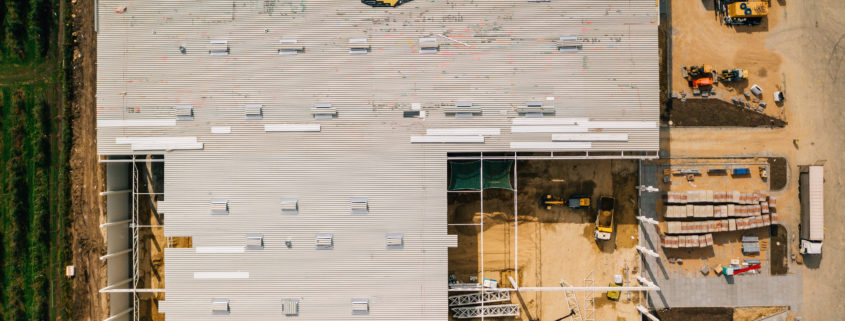When shopping the market for a new commercial roof, it’s important to keep track of the overall health of your building. Each commercial roof has its advantages and disadvantages, and with the amount of options available out on the market, making a decision can be pretty difficult. There are built up roofing, single ply roofing membranes, metal roofing, pitched or flat roofs and a variety of coatings. It all depends upon the commercial building you have and the best option available for you, the typical climate of the area where your building is, longevity of the roof choice and obviously the impact on energy efficiency.
Keys To Operational Optimization
Three things to consider when purchasing a new commercial roof are: durability, energy efficiency and how cost-effective the roof is and will be. If all of the property needs are properly met and owners keep up with the maintenance, your commercial roof can last 50 years or more! Energy efficiency, with the rising costs of fuel, has been on consumers’ minds for years now and it’s no different with putting a roof on your commercial property. Some cities have even adopted energy efficiency guidelines for their permit process and building owners must abide by these rules in order to operate. In the long run, it pays to keep energy efficiency in mind when choosing your commercial roof, because in the long term, it can save you a lot of money on energy cost. Cost effectiveness doesn’t mean how cheap the materials and installation are either, it also means how long the warranty will last. In the commercial roofing industry, different companies require different roofing solutions for their properties. We’ve put together a list of the most used and popular types of commercial roofing materials on the market today.
Built-Up Roofing(BUR)
Our list begins with BUR or built-up roofing, by far the oldest commercial roofing system on the market today. Built-up roofing reflects harmful UV rays away from the building with 3-5 layers of protection and protects from a variety of environmental conditions. It has been a staple in the industry for upwards of 100 years, so its worth has been tested. The only downside to the BUR roofing is the difficulty of identifying where leaks and punctures are as the roof goes through its life cycle, making it one of the shortest life spans.
Metal Roofing
Nothing is quite like the aesthetic of a durable metal roof on a commercial building. They’re known for their lifespan of 40-60 years, and they can be used on steep roofs and low slope roofs and are much more fire resistant and flame retardant than their counterparts. Metal roofing’s only downside is that they have the propensity to corrode and rust whenever water is present, and this corrosion can be exacerbated by lack of maintenance. Metal roofs also don’t allow for the expansion and contraction of panels due to the spacing of their panels. Despite this, they’re made with some unique features today such as rigging for solar panels and snow removal features to keep the surface from being weighed down in the winter months.
Single-Ply Roofing
Single ply membrane roofing as a term applies to several different types of roofing materials. Those materials being: EPDM (ethylene propylene diene monomer), PVC (poly vinyl chloride), and TPO( thermoplastic polyolefin) are all different and unique membranes. These are either heat sealed to the surface of the roof or rolled out and adhered. They all provide great reflectivity and protection from the elements. The only difficulty with EPDM roofing is their propensity to be punctured by debris and hide areas of damage over their life cycle. TPO roofing and PVC stand up to the debris better than EPDM, but are often imitated by cheaper versions passing themselves off as the real product, often of much lower quality membrane roofing.
SPF (Spray Polyurethane Foam)
SPF is sprayed on in a liquid form and expands into a foam that completely covers the surface of the existing roof. This waterproofing system can keep a roof surface protected, watertight from the elements for over 50 years if installed properly. It should be checked on twice a year and needs to be installed in nice weather conditions. The elastomeric properties of these types of rubber roofing often expand and contract perfectly with the change from low to high temperatures.
Shingle Roofing
Shingle roofing has been used for many years in many residential applications, but is also not out of the ordinary to be seen in the commercial roofing context, too! Usually reserved for steep slope roofs, shingle roofs are puncture resistant, versatile and affordable. A lot more affordable than single ply options listed above. Shingles are usually easily installed with staples and adhesives. This roof doesn’t always come in the asphalt shingles variety either, they’re commonly made of clay, wood shake, plastic, ceramic and tile to name a few.
Call Your Local Roofing Experts, TEMA Roofing!
Let the roofing experts at TEMA guide you through the process of installing your property’s commercial roof. TEMA Roofing Services has been in the commercial roofing industry for 3 generations and has experience in every type of commercial and residential roofing options on the market. Whether you’re in the market for installation, service or repairs, let the roofing contractor team at TEMA make your roof work for you! Contact us today to set up an appointment and get us working on your commercial roof project.





